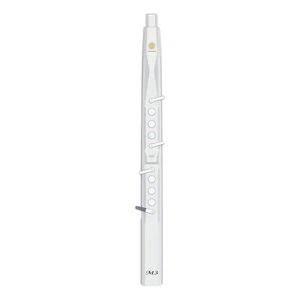The term "cucurbit flute" is often used to refer to the Hulusi. The Hulusi, also known as the cucurbit flute, is a remarkable musical instrument with a rich history and cultural significance.
The Hulusi has gained this alternate name due to its key component - the gourd. A gourd, which belongs to the cucurbit family of plants, forms an integral part of the instrument's structure. The use of the gourd as the resonator gives the Hulusi its distinct sound and character.
The Hulusi's association with the cucurbit family not only provides it with a descriptive name but also highlights its connection to nature. The natural shape and texture of the gourd contribute to the instrument's aesthetic appeal.
The term "cucurbit flute" emphasizes the unique material and design of the Hulusi. It distinguishes it from other types of flutes and helps to categorize it based on its primary component.
When we delve deeper into the world of the "cucurbit flute," we uncover a plethora of interesting aspects. The selection of the gourd for the instrument is not arbitrary. Different gourd varieties and their sizes, shapes, and wall thicknesses can affect the tone and resonance of the Hulusi. Musicians often seek out specific types of gourds to achieve the desired sonic qualities.
The crafting process of a Hulusi, or the "cucurbit flute," is a meticulous art. Skilled artisans carefully shape and hollow out the gourd to create the ideal resonator. They then attach the bamboo pipes with precision to ensure proper tuning and playability.
The sound produced by the "cucurbit flute" is highly dependent on the interaction between the gourd and the bamboo pipes. The gourd's natural resonance enhances the notes played on the pipes, creating a harmonious and pleasing sound. The tone can range from soft and gentle to more vibrant and assertive, depending on the player's technique and the instrument's construction.
The "cucurbit flute" has a significant place in various cultural and musical contexts. In some regions, it is an integral part of traditional folk music, used to celebrate festivals, tell stories, and convey emotions. Its presence in these cultural expressions showcases the deep connection between music and community.
Musicians who play the "cucurbit flute" develop specific techniques to bring out the best in the instrument. They master the control of breath, finger placement, and the manipulation of the instrument's unique features to create a wide range of musical expressions. From simple, soulful melodies to complex and intricate compositions, the "cucurbit flute" offers a vast canvas for creativity.
The popularity of the "cucurbit flute" has also spread beyond its traditional boundaries. It has caught the attention of musicians and music lovers around the world who are drawn to its distinctiveness and charm. This has led to cross-cultural collaborations and the integration of the Hulusi into diverse musical genres and styles.
For example, in contemporary music, the "cucurbit flute" might be combined with modern instruments and production techniques to create a fusion of traditional and modern sounds. This not only showcases the instrument's adaptability but also contributes to its continued evolution and relevance.
In educational settings, the "cucurbit flute" can be introduced to students as a means of exploring different musical cultures and developing an appreciation for diverse sounds and playing techniques.
In conclusion, the term "cucurbit flute" not only provides a descriptive name for the Hulusi but also opens up a world of exploration into its construction, sound, cultural significance, and musical possibilities. It serves as a reminder of the instrument's unique identity and its contribution to the rich tapestry of musical expression.
SUNRISE MELODY Electric hulusi flute instrument
Chinese hulusi flute instrument flute instrument it has a unique ethnic style and is extremely ethnic.
And it has a good volume and 10 timbres, it is easy to learn and simple to use, especially suitable for beginners.
6 Major Core Selling Points, a variety of innovative functions to meet different performance needs:
10 kinds of timbres
Touchable octave
Connect headphones
Four fingerings
Built-in battery
Built-in speakers



